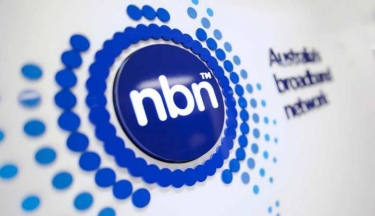The Australian Competition and Consumer Commission ACCC)’s latest NBN Wholesale Market Indicators Report reveals that in the June quarter, smaller retail service providers continued the “steady increase in their market share in the wholesale market at the expense of the top four providers”, increasing by 0.8 percentage points (with 77,758 additional services) to 12.6 per cent - and in the June quarter 2021, their combined market share was 8.2 per cent.
The report looks at the wholesale market for NBN services, particularly the residential broadband services that retailers buy from NBN to sell to consumers.
In the June quarter, smaller retail service providers continued the steady increase in their market share in the wholesale market at the expense of the top four providers, increasing by 0.8 percentage points (with 77,758 additional services) to 12.6 per cent. In the June quarter 2021, their combined market share was 8.2 per cent.
|
|
The ACCC says this growth was led by Aussie Broadband, which increased its market share to 6.4 per cent (up 0.3 percentage points).
The ACCC report also reveals that wholesale market shares declined slightly for the established providers, with Telstra (down 0.4 percentage points to 43.3 per cent), TPG (down 0.2 percentage points to 23.1 per cent), Optus (down 0.1 percentage points to 13.8 per cent), and Vocus which is the fourth-largest telco (down 0.1 percentage points to 7.2 per cent).
“The growth of smaller providers is increasing the competitive tension in broadband markets, and many Australians will see the benefit of that,” ACCC Commissioner Anna Brakey said.
“Consumers have a wide range of choice for their broadband retailer, which enables them to choose the product that best suits them.”
The ACCC report also shows that broadband providers expanded their presence at NBN’s 121 Points of Interconnection (POIs), which are the physical locations where providers can connect to the NBN.
In the June quarter there were at least 17 providers directly acquiring NBN services at all 121 of the POIs, compared to 13 providers in the March quarter.
“More providers connected at all of the Points of Interconnection means consumers will have a wider range of broadband providers to choose from, no matter where they live,” Commissioner Brakey said.
The report also shows that just over 8.7 million residential broadband services are now on the NBN, and three-quarters of those are high speed plans of at least 50 Mbps or more - and in June 2022, the 50 Mbps service was the preferred speed tier for 55 per cent of Australians, down from 58 per cent in the March quarter.
“The popularity of the higher speed tiers means that retail competition for these customers is strong, so we recommend that consumers regularly check for new offers or newly discounted deals,” Commissioner Brakey said.
The ACCC also notes that retail service providers acquired slightly more Connectivity Virtual Circuit (bandwidth) capacity over the June quarter. and average capacity acquired per user increased from 2.76 Mbps in the March quarter to 2.84 Mbps in the June quarter.










































